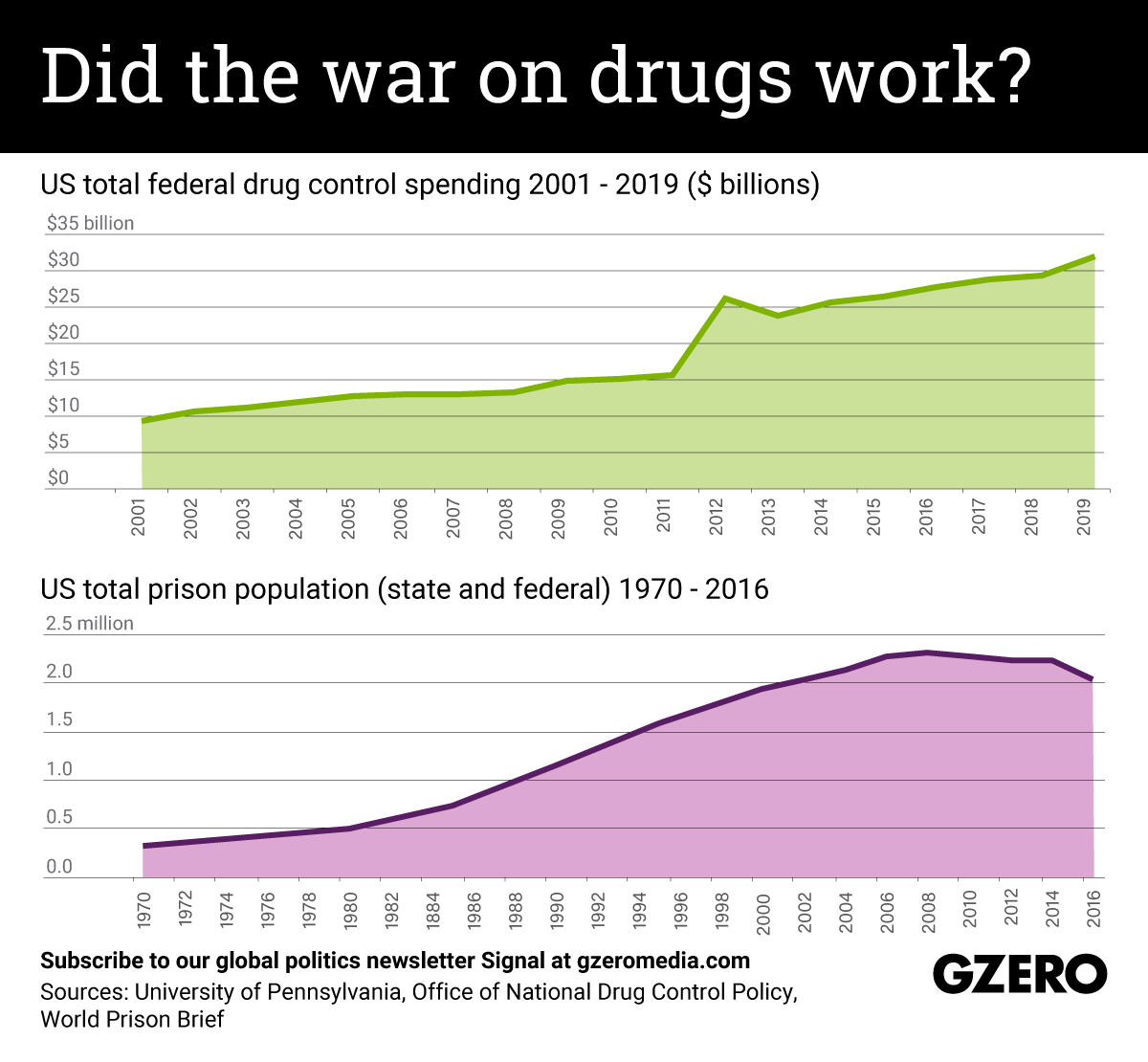It's been 50 years since President Richard Nixon declared a war on drugs in the United States, a campaign underscored by punitive policies aimed at eradicating everything to do with illicit drug use. Since then, the US government has spent over $1 trillion on the campaign, roughly a 1,090% increase in spending in just 39 years. But all this money hasn't stopped drug use from surging in recent decades, along with overdose deaths. In fact, the war on drugs' main legacy is that of mass incarceration; severe penalties for drug-related offenses resulted in mostly Black and Latino Americans being thrown into prison. We take a look at government spending on drug control and the prison population size in recent decades.
From Your Site Articles
